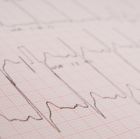Main Page: Difference between revisions
Jump to navigation
Jump to search
mNo edit summary |
mNo edit summary |
||
| Line 121: | Line 121: | ||
|- | |- | ||
|} | |} | ||
{| class="wikitable" font-size="70%" width="100%" style="margin:5px 5px 5px 5px;border:1px solid #E2ACB1;border-spacing:8px;"|- style="text-align:center;background-color:#6EB4EB;" | {| class="wikitable" font-size="70%" width="100%" style="margin:5px 5px 5px 5px;border:1px solid #E2ACB1;border-spacing:8px;" | ||
|- style="text-align:center;background-color:#6EB4EB;" | |||
|- | |- | ||
| | | | ||
Revision as of 17:09, 28 February 2009
| Welcome to ECGpedia, a wiki electrocardiography (ECG) course and textbook designed for medical professionals such as cardiac care nurses and physicians. |
|
|
ECGpedia in other languages
|
Popular items
|
News
|
|



